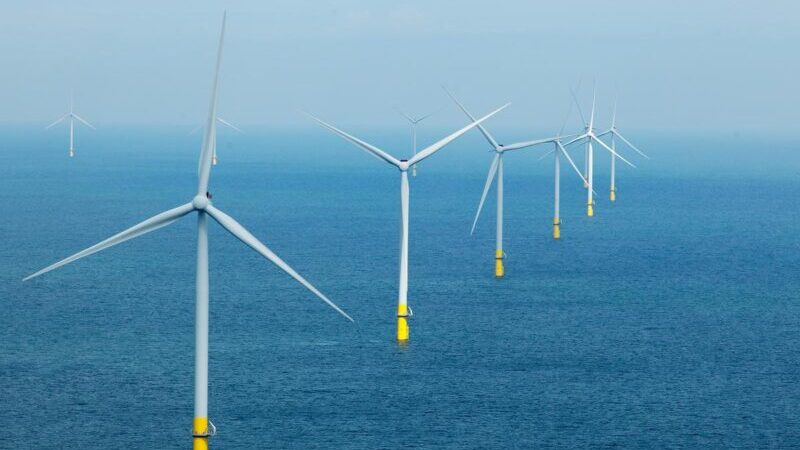Offshore wind has grown in prominence over the past decade to become a leading form of clean, renewable power.
Many people who don’t pay close attention to the energy industry will have noticed wind turbines popping up around coastlines all the way from Europe to Asia.
It’s a marvel of modern engineering that we can place very heavy material – thousands of tonnes – in the open water and they can not only withstand the ravages of the sea but safely generate huge quantities of electricity.
These wind farms vary in size, number, and proximity to the shore, depending on when they were built. The one feature they have in common is fixed foundations going into the seabed to keep them firmly in place.
But things are now changing. As the wind industry has become more sophisticated so has the potential for new technologies to support different ways for us to harness the power of the wind. One of these new innovations is floating offshore wind.
What is floating offshore wind?
Floating turbines are not so much floating as the name suggests. While existing turbines are based on foundations, which are fixed securely on the seafloor, sometimes by piling foundations down to a depth of 60 metres below the seafloor, floating foundations are more flexible. The turbine sits on a platform, buoyant on the ocean surface, which is anchored to the seabed with long cables.
The major benefit of this innovation is that it unlocks a whole range of new locations which were previously too deep or too complex to host wind farms. This means many places with coastlines with a deep seabed, for example, the west coast of the United States, or large parts of South America, could benefit from a new and plentiful source of clean power.
At the moment the market for floating offshore is small – only around 60 megawatts of capacity have been built, compared to the 52,000 megawatts for existing offshore projects. But trials have shown the concept works.
The world’s first floating offshore wind farm, called ‘Hywind’, was built in 2017 around 16 miles off the northeast coast of Scotland, a place known for experiencing rough weather. The project has exceeded expectations, able to withstand storms and waves up to 10 metres, all the while producing high levels of clean power.
The next stage in the process is to build floating offshore bigger and further out to sea. Ørsted, a Danish renewables developer, has been an early mover into the floating offshore wind market. The company recently won the right to develop a huge 1 gigawatt floating project, also off the coast of Scotland.
Next frontiers
Gabriel Davies, Ørsted’s Programme Director for Floating Wind, said an ideal future for her would be to see a significant number of very large floating projects in operation within 10-15 years. This would help to bring costs down and open up new markets across the globe.
For the market to take off at this scale would mean an increase hundreds of times on what it is today. This is an ambitious target and one which would need high levels of investment and political support.
Nevertheless, from a technical perspective, the floating wind market is enormous, taking into account the fact that almost 80% of offshore wind suitable seabed is in floating only areas.
Davies explains that the technology can act “as a complement, not replacement” to existing, seabed-fixed projects. “In the next decade, floating offshore wind will become like ‘ordinary’ offshore wind, only placed on another type of foundation.”
One concern for the technology as it grows is to ensure the environment is protected. Floating offshore wind projects’ interaction with wildlife far out to sea is a relatively new subject area, that needs to be explored further.
Ørsted has a commitment that any new offshore wind project it commissions by 2030 will have a net-positive impact on biodiversity. With this in mind one suggestion the company has is to create a ‘biodiversity criteria’ when developers are bidding for the right to build new floating projects. This would mean protecting nature from day one. “We want to see these projects co-existing in harmony with marine life and fisheries,” says Davies.
At a time when the world needs to dramatically increase ambition on tackling the climate crisis, floating offshore wind could provide an answer. By tapping into an existing renewable technology it offers access to ever greater amounts of clean power, something we will need to fuel the net-zero economy. The prospect is tantalising if we get it right.
Adam Wentworth is a freelance writer based in London.
This post was sponsored by Orsted. See our editorial guidelines for what this means.
